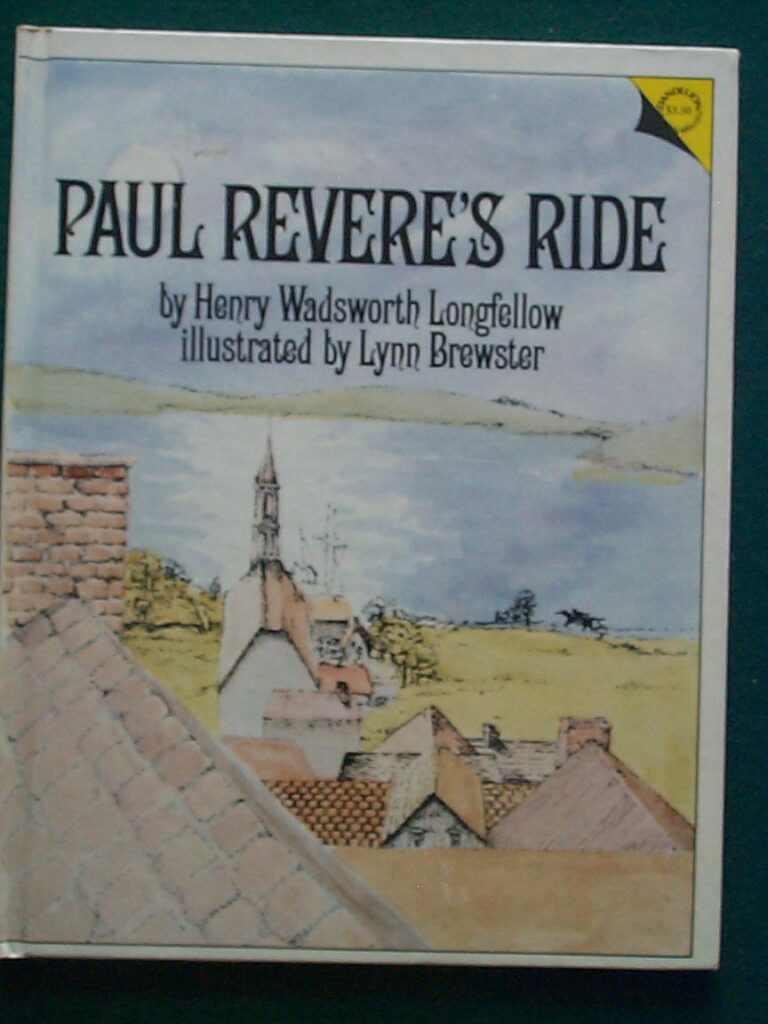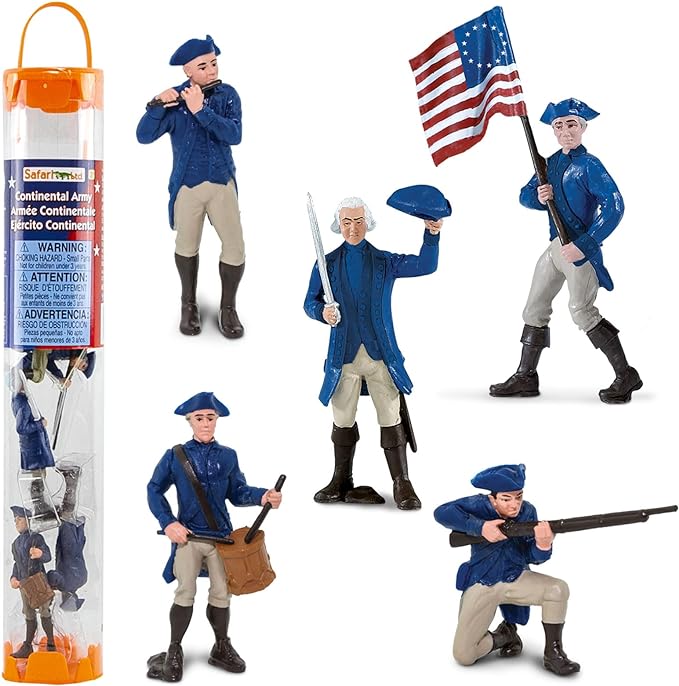American Revolution Unit Study

We just wrapped up our American Revolution Unit Study. As the big kids have gotten older, their interest in politics and government has increased.
They are curious about how laws are made, the roles of political leaders, why there is so much debate and division among them, and more. The bigs’ awareness of the context they are living in is growing, just as they themselves are growing!
Update: We did end up doing a more focused U.S. Government Unit Study a few years after sharing this post, that you can read all about here!
This post contains affiliate links and we may earn compensation when you click on the links, at no additional cost to you.
I figured that in order for them to understand how things work now, we needed to step back in time and learn about where we came from. So … we dove deep as an interest-led homeschool family into an American Revolution Unit Study!
My kids are right-brain/visual/creative learners so today I am sharing what we used, in case your kids are the same. My kids are currently ages 8, 11, and 13.

BOOKS FOR INFORMATION:
We have slowly journeyed our way from the beginning of time to the 1700s using Story of the World as our spine. Normally, we read through the volumes at a consistent pace. But if you want to camp on this time period like we did, Chapters 21 (Fighting Over North America) and 22 (Revolution!) of Volume 3: Early Modern Times, gives a solid overview of events and people leading up to America breaking away from England.
I personally found Units 2 and 3 in the Big Fat Notebook: American History valuable as a homeschool mama wanting a little more information to help me teach material better to the kids. I didn’t necessarily read this book to them; it was more for my own reading and understanding.
Frankly, I didn’t pay much attention to history when I was in school, so becoming a homeschool mom has offered me a second education in this area! I am a right-brain learner myself, so I absolutely loved the concise, yet thorough-enough information provided alongside the “doodling”/visual effects of this resource.
My kids love (and need) images when processing new information. The Smithsonian American History: Visual Encyclopedia provided what we needed in that department! Lots of beautiful images to peruse through.
As an interest-led homeschool mom, I did not make them read through this. Instead, I used the method of strewing (where you intentionally leave things around the house that may inspire children to pick those things up for further examination), moving it around from the living room to the dining room, with it propped open to pages I thought they may enjoy related to the topic we were covering.
UPDATE: Another great resource, which came out after our family covered this time period, is the America’s History series from the Tuttle Twins!
UPDATE: As we neared the high school years, we began reading the biographies of the founding fathers. In Able and Mighty Men, first published in 1838, a short biography of each signer of the Declaration of Independence is given. This is a valuable history book, packed with not only the biographical information of 56 great men, but also the beautiful commentary of L. Carroll Judson.
CHAPTER BOOKS FOR READING ALOUD:
Creatives love engaging stories! There is so much documented about male leaders during the time of the American Revolution so I wanted to balance the perspective by selecting two chapters books featuring female protagonists for our family read-alouds.
The Secret Soldier by Ann McGovern is a short chapter book (can be read independently by kids 8+) about the true story of Deborah Sampson. She became a war hero by disguising herself as a man and joining the army! Even my 13 year old son enjoyed this simple story about her adventures during the revolution.
In a similar vein, Toliver’s Secret shares the fictional adventure story of a young girl who was given the task of completing her spy-grandfather’s important mission after he gets injured. She disguises as a boy for what seems a simple assignment, but obstacles quickly come in the way of getting her grandfather’s message into the right hands!
PICTURE BOOKS:
Life with bigs means we can go longer in meatier chapter books and engage in rich conversations about big ideas, but my kids (thankfully!) still enjoy simple picture books. In fact, because I have right-brain kids, I utilize the illustrations in picture books often while I read aloud from other resources with more content. Here are a few we enjoyed during our American Revolution unit study:
The Hatmaker’s Sign by Candace Fleming is a retelling of the story Benjamin Franklin is told to have shared with Thomas Jefferson as a way to encourage him after Congress attempted to edit his draft of The Declaration of Independence.
A Picture Book of Thomas Jefferson by David A. Adler. Filled with colorful pictures, this makes an easy, interesting read for younger kids. A Picture Book of George Washington is also available by the same author.

Don’t forget some poetry! Henry Wadsworth Longfellow’s Paul Revere’s Ride was a great poetry read for one of our tea times. The specific book we used was illustrated by Lynn Brewster.
EARLY READERS:
The I Can Read! Level 2 Series has a few titles featuring heroes of the American Revolution. We have Ben Franklin Thinks Big and George Washington: The First President, but they also have Alexander Hamilton: A Plan for America. These were perfect for Cha Cha’s reading practice as well as simple copywork, and she really enjoyed looking through the detailed illustrations.
VIDEOS:
Liberty’s Kids episodes were the perfect supplement for my visual learners. The historical fiction animated series features two teenage reports covering the events of the Revolutionary War for Benjamin Franklin’s newspaper, The Philadelphia Gazette. Covering events from The Boston Tea Party to the Constitutional Convention, it features the voices of major celebrities like Walter Cronkite, Sylvester Stallone, Billy Crystal, Arnold Schawrzenegger, Dustin Hoffman, Annette Benning, Liam Neeson, Whoopi Goldberg, and more. My kids enjoyed making the connections between the information from our reading and the series. We own the DVD collection.
For American Girl lovers, watch Felicity: An American Girl Adventure. This movie is about 10-year old Felicity Merriman and life right before the American Revolution. I loved how it depicted the tension between Loyalists and Patriots, highlighting the fact that independence and war was not mutually agreed upon among all the American colonists. We watched by renting the movie on Amazon Video, but it is also available on DVD.
FOR TACTILE LEARNERS:
How fun are these action figures! Over the years, we’ve collected various themed tubed figurines to incorporate into our learning. The kids will play with them while I read aloud or re-enact what they are learning or use them in dioramas they’ve created. Both sides of the war are represented with a British Army set and a Colonial Army set, and will provide supplemental fun for any American Revolution Unit Study.
ACTIVITIES:

If you are at all like our family, we love incorporating food into our learning! We enjoyed various recipes from Felicity’s Cookbook, like Johnny Cakes and Apple Butter.
The kids really enjoyed incorporating chalk pastel art in our American Revolution study; I even participated and made my own set of pictures! With You Are an Artist video lessons, you just follow along with Nana, who takes you step-by-step drawing George Washington, Women in the War, the Liberty Bell, and more!

I created these printables that you can also use as part of your American Revolution studies!

Have you studied the American Revolution with your kids? I’m sure this won’t be the only time we go through the subject in our homeschool, so if you have any other fun ideas, I’d love to hear them in the comments!

















